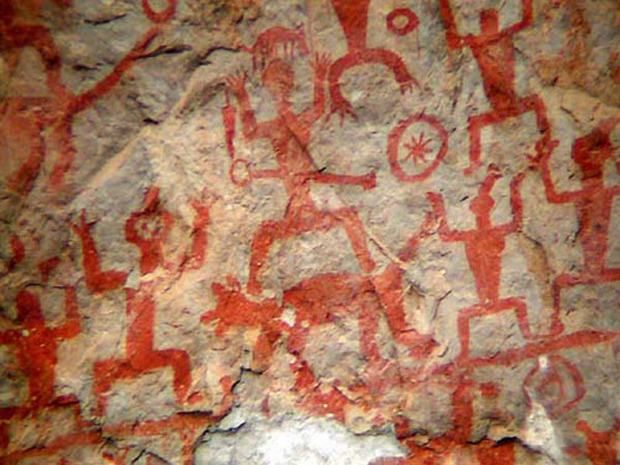The Mysterious Rock Art Of ancient china
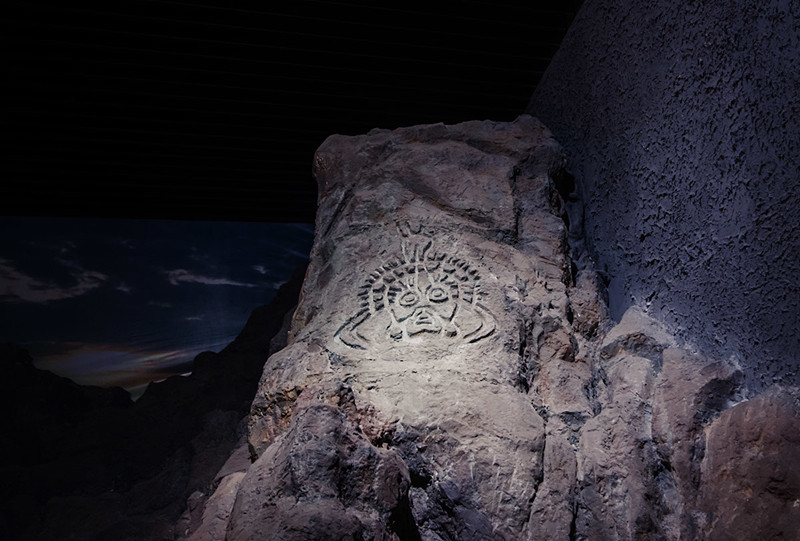
Thanks to a famous geographer named Li Daoyuan, China was the earliest country to officially discover ancient rock art in the world.
As a matter of fact, the Chinese geographer recorded over twenty sites in a book called “Shui Jing Zhu”, written over 1.500 years ago. Therefore, we can safely conclude that China was aware of its ancient rock art since the 5th century.
Other mentions of the past include a book from the Ming Dynasty (1368-1644), documenting the Mount Huashan rock art and adding some lore and legends about how they could be only seen at certain times of the day, and about the belief that was prohibited to point fingers at the paintings because it was considered a bad omen.
Thanks to the legacy of Li Daoyuan, the petroglyphs were rediscovered in recent times and investigated with modern equipment and techniques.
Ancient Rock Art At Mt.Helan
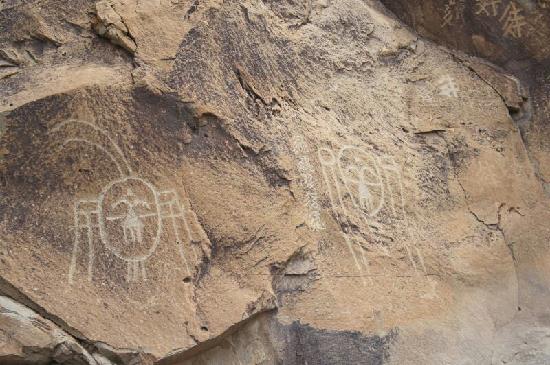
The Helan Mountains – Helan Shan in Chinese – are home to one of the most important ancient rock art sites in all of China.
The main cluster is found at Helankou, the dramatic gorge cutting north-west through the mountain chain, which forms the site known as Helankou Rock Engravings Park.
Over 6,000 engravings have been documented at Helankou. The engravings have clearly been produced over a considerable period of time, somewhere between 3,000 and 10,000 years ago.
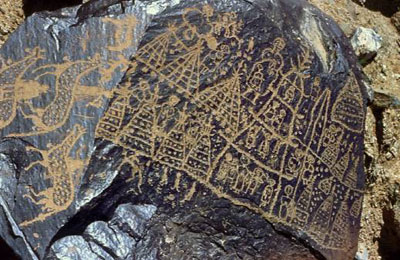
Among the petroglyphs and rock art depicting animals and scenes of everyday life such as hunting, herding, dance, and procreation, there are many enigmatic scenes and figures representing divine beings venerated in ancient China.
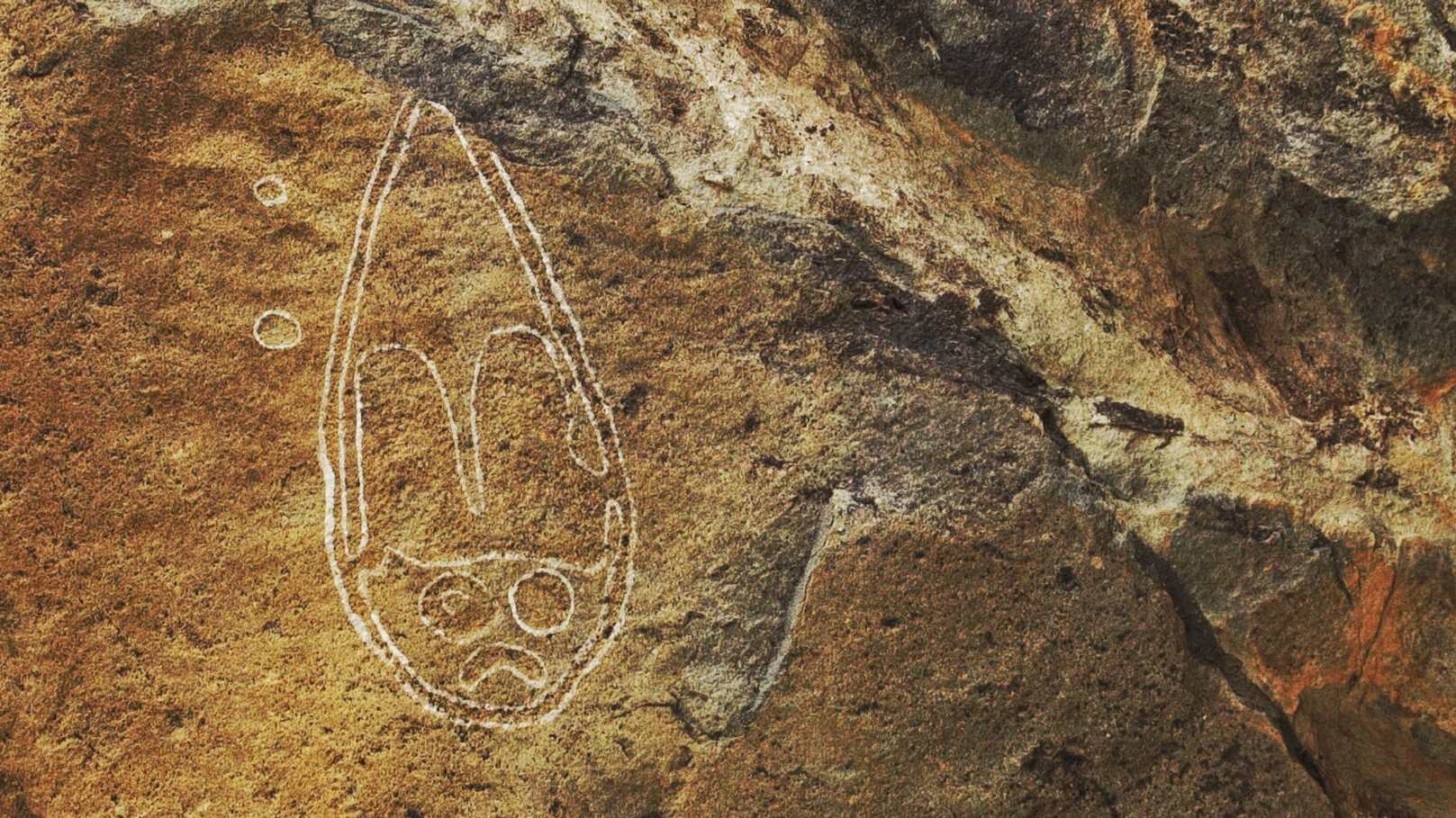
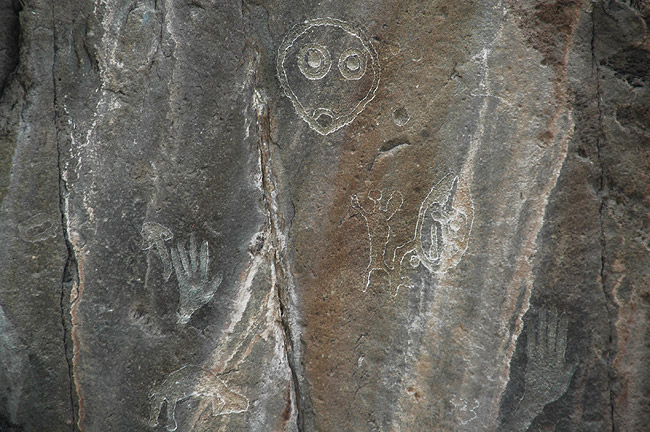
Their meaning remains speculative as we obviously know almost nothing about the cultures that made those and their beliefs, but as in other cases in the world, when it comes to ancient engravings, researchers and scholars often attribute a shamanic meaning to those.
The figures and symbols consist of mysterious masked-like faces, the most famous and well preserved of which is undoubtedly the one known as the “Sun God”, which is also one of the oldest petroglyphs in the area.
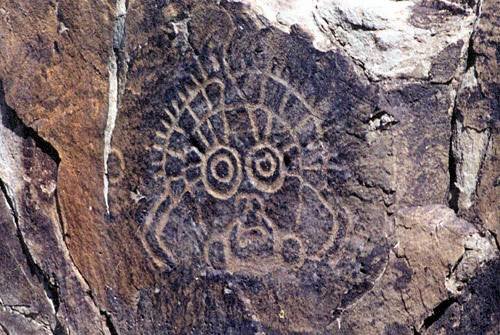
This divine being seems to wear a headdress attached to some kind of “tubes”, and he is depicted as shining, with rays all around his head, just like the descriptions and representations of divine subjects in almost every ancient mythology and religion.
The Ancient Rock Art Of Kangjiashimenzi
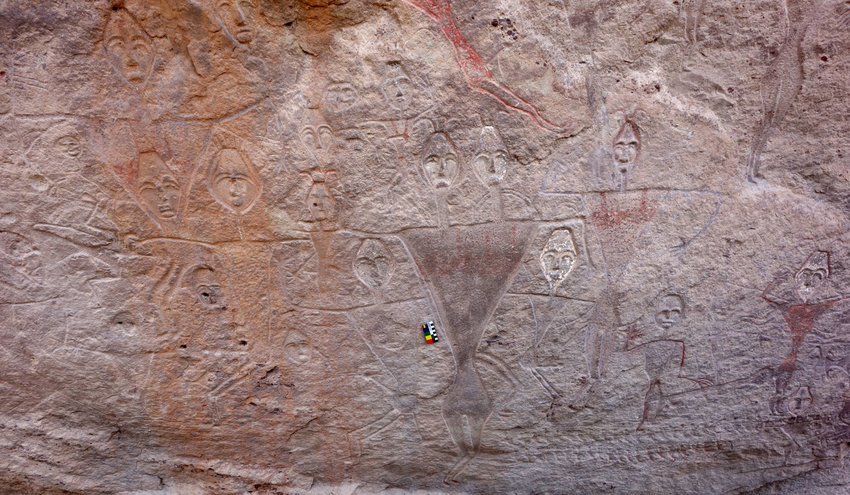
Another collection of ancient petroglyphs can be seen at the site of Kangjiashimenzi. The carvings have been dated to about 2.000 BC and were engraved into the side of a red-basalt rock in the region of Xinjiang.
The rock is located within the Tianshan range and was first discovered by Chinese archeologist Wang Binghua.
The most prominent scene is the one depicting 83 figures that appear to be considerably bigger than the other beings of the scene. Scholars agree that it depicts some kind of sex ritual connected to fertility.
One thing is clear: they were foreigners because they are depicted in a saluting gesture.
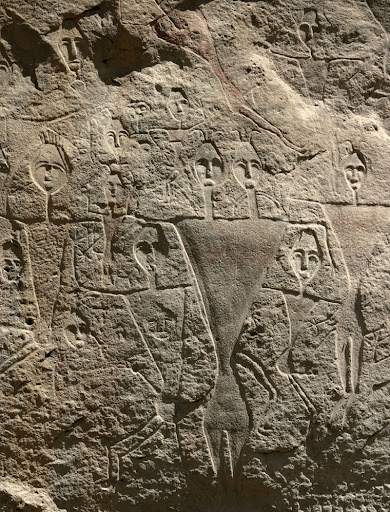
To a person with an understanding and knowledge of mythology and ancient cults, this surely reminds of the widespread belief that in a remote era the gods descended from the heavens to have sexual intercourse with the women on Earth.
Zuojiang Huashan Rock Art Cultural Landscape
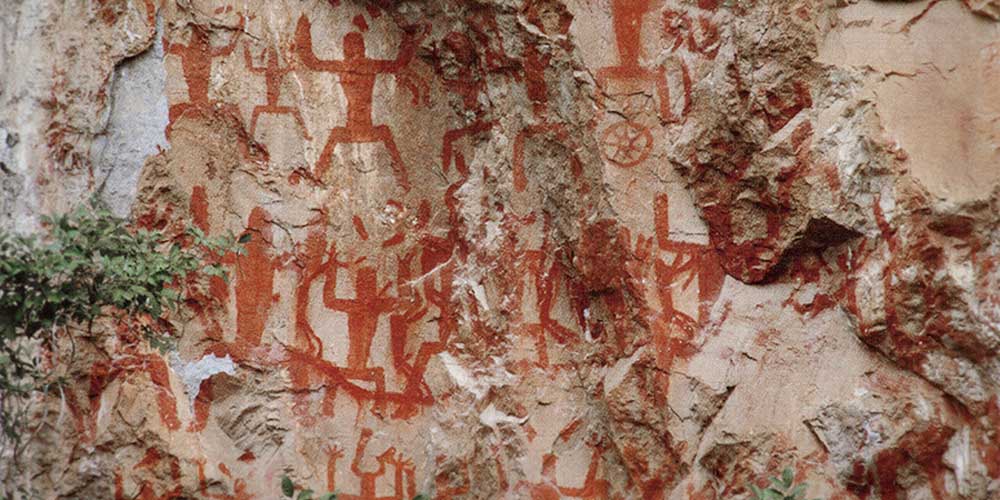
The Zuojiang Huashan Rock Art Cultural Landscape is a site included in the 2016 UNESCO World Heritage List. It is located in the Guangxi Autonomous Region in southern China.
The rock paintings are visible on the limestone cliffs of this area and are scattered in 38 different sites.
The largest decorated surface measures 170m wide and 40m high and, with its 1900 recognizable figures grouped into about 110 groups, is one of the greatest examples of rock art in all of China.
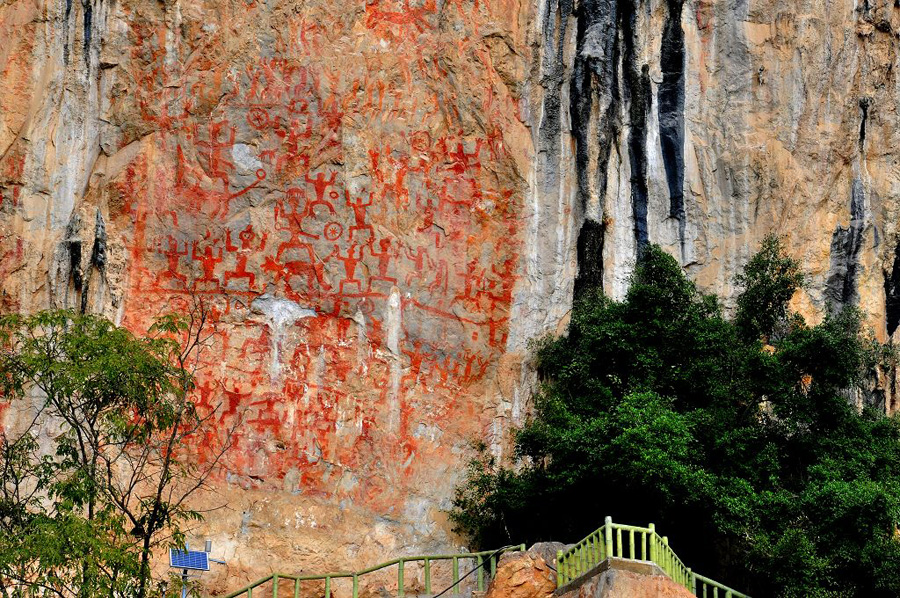
The paintings are positioned at a height between 30 and 90 m above the surface of the Ming River, placed on its western bank.
They appear red and are made with a mixture of red ocher (hematite), animal glue, and blood, and represent human and animal figures along with drums, knives, swords, bells, and boats.
The rock paintings are found in 38 different sites divided into three areas around Chongzuo, along the Zuofloden River and the Ming River.
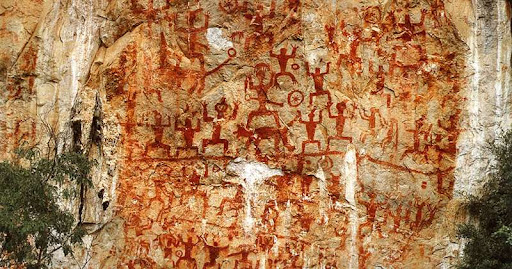
Four miles southwest of Fusui along the Zuofloden, there are 18 sites with cave paintings. Two kilometers northeast of Longzhou along the Zuofloden are 16 other sites. Along the Ming River, just over a kilometer north of Ningming, there are 4 other sites with murals totaling 8,000 square meters.
In total, the cave paintings in Huashans show more than 4,000 of which more than 3,000 of the images depict people.
The image that appears most frequently is a crouching person surrounded by other images depicting animals, knives, swords, drums, and bells. The set of images probably describes a ritual act. The images are very similar to those of the Dong Son drums found in southern China and also in Vietnam.
A recurring image of many ancient cultures is also present at the site, which is the circle with the dot inside, widely adopted by the Native American cultures.
Human figures are generally between 60 and 150 cm tall, but one figure measures 3.58 m in height.
